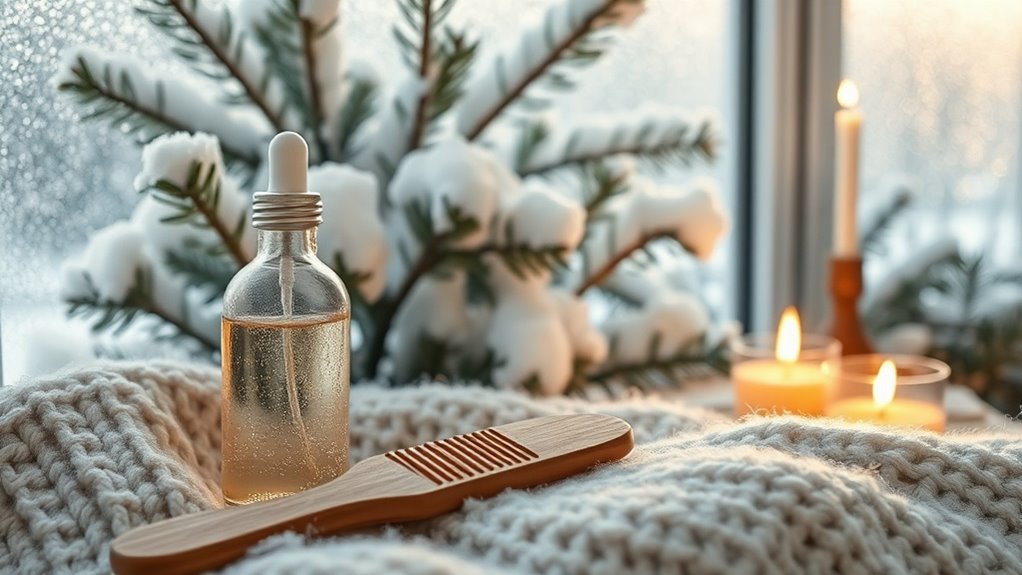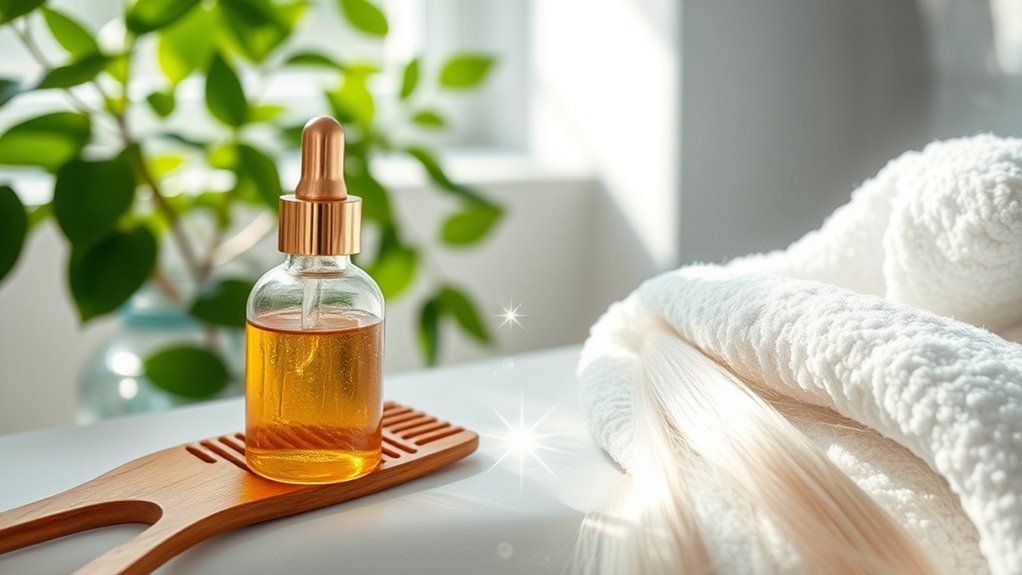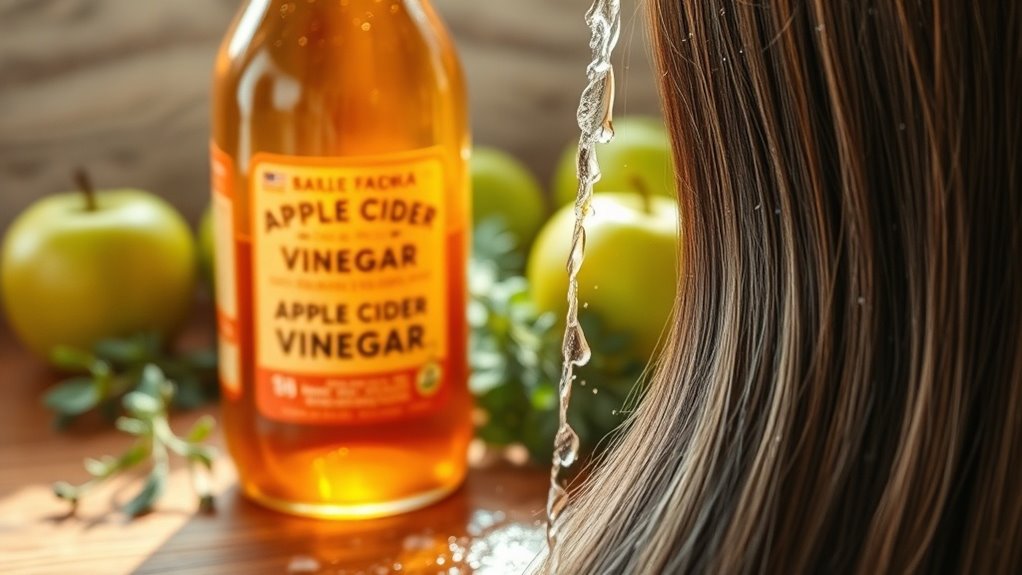7 Days of Scalp Massage – Did My Hair Grow.
If you’ve ever wondered about the effects of scalp massage on hair growth, this experiment might spark your interest. In just seven days of consistent massage techniques, you could tap into potential benefits like improved blood flow and follicle stimulation. But what actually happens during this week, and can these techniques lead to tangible results? Let’s explore the journey and uncover the nuances of scalp massage as a hair care strategy.
Key Takeaways
- Engaging in 7 days of scalp massage can enhance blood circulation, delivering nutrients to hair follicles and promoting potential growth.
- Initial sensations may include improved scalp sensitivity and texture, signaling the start of a healthy massage routine.
- Users often report a slight increase in hair density and thickness after a week, indicating improved follicle health.
- Consistency in massage techniques is key; gradual results may be observed alongside a boost in confidence and emotional well-being.
- Documenting progress through visible changes and hair measurements can help assess the effectiveness of the scalp massage routine.
Day 1: Setting the Stage for Scalp Massage
On Day 1 of your scalp massage journey, it’s essential to prepare both your mind and environment for optimal results. Research shows that a regular scalp massage can enhance blood circulation, which promotes hair growth. Clear distractions from your space to establish a calm atmosphere conducive to focus. Consider incorporating relaxing music or scents to further enhance your experience. By balancing relaxation and stimulation, you’re setting the stage for effective scalp massage for growth. Visualize healthy hair flourishing as you prepare; this mental focus can enhance the physiological effects, making your scalp massage practices both more enjoyable and effective. Incorporating effective scalp massage techniques into your routine can lead to even greater improvements in hair vitality.
Day 2: Techniques and Tools Used
Today, you’ll explore essential finger techniques that enhance blood circulation in your scalp, promoting hair growth. Additionally, you’ll learn about various tools designed to aid your massage routine effectively. Incorporating these techniques not only encourages increased blood flow but also supports the science behind scalp massages, which is crucial for enhancing hair health.
Finger Techniques Explained
While exploring effective methods for scalp massage aimed at promoting hair growth, understanding various finger techniques is essential.
Start with circular motions using your fingertips to stimulate blood circulation, enhancing nutrient delivery to hair follicles. Use light pressure, gradually increasing it to improve collagen production.
Pinching the scalp between your fingers can create a firm grip, promoting relaxation and reducing tension. Additionally, you can employ tapping motions, gently striking the scalp to stimulate nerve endings.
Essential Massage Tools
Scalp massage tools play a crucial role in enhancing the effectiveness of your hair growth routine.
Using a soft-bristle brush can stimulate blood circulation, which nourishes hair follicles. Rubber scalp massagers are excellent for loosening tension, promoting relaxation while enhancing stimulation. You might also consider a vibrating massager; the vibrations can increase blood flow even further.
Hair oils, applied with these tools, contribute essential nutrients to support hair health. Integrating these tools into your routine helps ensure consistent stimulation, maximizing the potential benefits you’ll see in hair growth.
Selecting the right combination can significantly impact your results and overall scalp health.
Day 3: Noticing Initial Changes
On Day 3 of your scalp massage routine, you might start to notice subtle changes that signal your body’s response to increased blood flow and stimulation.
Look for slight improvements in scalp sensitivity and texture; these indicators suggest heightened circulation and nutrient delivery to hair follicles.
You may also observe a reduction in tension around the scalp area, contributing to a more relaxed state.
As your technique improves, the rhythmic motions can stimulate the sebaceous glands, promoting natural oil production. Scalp massages can also enhance thicker hair by directly improving the overall health of your hair follicles.
These initial changes mightn’t be dramatic, but they can lay the groundwork for healthier hair growth in the long run.
Day 4: The Science Behind Scalp Massage
As you experience initial improvements from your scalp massage routine, it’s important to understand the mechanics behind these changes.
Scalp massage increases blood circulation, delivering essential nutrients and oxygen to hair follicles, which can invigorate growth. Additionally, it stimulates nerve endings, triggering the release of growth-promoting hormones.
The action also reduces stress by promoting relaxation and lowering cortisol levels, which can otherwise inhibit hair growth. Engaging the scalp’s muscles enhances elasticity and reduces tension, contributing to a healthier environment for hair.
All these factors combined create a more favorable condition for your hair’s growth cycle, supporting the results you’re starting to notice. Furthermore, maintaining proper water intake is crucial as it aids in achieving overall bodily health, including that of the skin and hair, enhancing their vitality and appearance.
Day 5: Hair Growth Progress Report
As you assess your scalp today, look for visible changes in hair density and length.
Pay attention to any sensations or reactions your scalp has experienced during the massage routine.
Finally, evaluate the growth rate by measuring any new hair strands and noting their development since you started the regimen. Incorporating nourishing treatments into your routine can further enhance the benefits of scalp massages.
Visible Hair Changes
While you may not expect drastic changes just yet, day five of your scalp massage regimen can reveal subtle but noteworthy effects on hair growth.
You might notice a slight increase in hair density, as improved blood circulation enhances nutrient delivery to hair follicles. This increased flow can stimulate the anagen phase of hair growth, promoting new hair strands’ emergence.
Also, some may observe a reduction in hair shedding, indicating healthier follicles. Although these changes mightn’t be immediately visible, documenting your progress is essential.
Regular assessment will help you identify patterns and gauge the efficacy of your scalp massage routine.
Scalp Sensation Observations
Following the visible hair changes noted by day five, you might also experience varying sensations on your scalp that could indicate the effectiveness of your massage routine. It’s essential to recognize these sensations as they may signal increased blood circulation and hair follicle stimulation.
| Sensation | Potential Implication | Frequency |
|---|---|---|
| Tingling | Increased blood flow | Occasionally |
| Warmth | Enhanced circulation | Often |
| Itching | Follicle response | Rare |
| Relaxation | Stress relief | Daily |
Observing these sensations can provide valuable feedback on your progress.
Growth Rate Assessment
To assess your hair growth after five days of regular scalp massage, it’s important to monitor not just the visible changes but also the overall rate of growth.
Begin by measuring the length of your hair from a uniform starting point, noting any increase. Typically, hair grows about half an inch per month; however, stimulation from massages can enhance circulation, potentially accelerating this rate.
Document any differences in hair density or texture, as these factors can also indicate growth. Regular observations will provide a clearer picture of the effectiveness of your scalp massage routine on hair growth, informing next steps.
Day 6: Addressing Challenges and Pain Points
As you delve deeper into the practice of scalp massage for hair growth, it’s essential to confront various challenges that may arise.
You might experience discomfort or pain during the massage, especially if you’re applying too much pressure. It’s crucial to strike a balance between firmness and gentleness.
Additionally, if you’re prone to scalp sensitivity or have existing skin conditions, you may need to adjust your technique or frequency.
Staying consistent is vital, but remember that results can be slow to appear. Acknowledging these challenges helps you adapt your approach and remain committed to your hair growth journey. Keeping your scalp healthy is also important to prevent issues like split ends, which can impede overall hair growth.
Day 7: Final Thoughts and Results
While you’ve dedicated time and effort to scalp massage for hair growth, it’s important to reflect on your progress and results. Analyzing various factors can provide insights on effectiveness. Incorporating techniques like breathing methods can further enhance your overall hair growth experience by reducing stress levels.
| Observable Changes | Emotional Response |
|---|---|
| Hair thickness increased | Feeling of hope |
| Reduced hair fall | Enhanced confidence |
| Improved scalp health | Sense of well-being |
Consider these outcomes: if you’ve noticed positive changes, maintaining this routine may be beneficial. However, if results weren’t satisfactory, don’t lose heart. Experimenting with techniques can foster solutions tailored to your hair growth journey.





